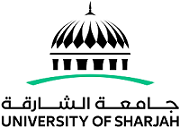Abstract
Urban Heat Island (UHI) is one of the most documented climate change phenomena. It is associated with higher ambient air temperatures in urban areas than in the surrounding suburban and rural areas. The negative impact of the UHI effect not only causes human discomfort but also increases the energy consumption of buildings and the concentration of pollutants and causes general health problems. Land Use/land Cover (LULC) plays a crucial role in the overall UHI due to the higher solar energy and thermal energy storage they contain and their influence on the overall ecology system. The expansion in the built area significantly increases the city's impervious land cover and subsequently increases the amount of heat released into the atmosphere. Tackling UHI involves the use of many mitigation techniques such as applying reflective materials, increasing green spaces with appropriate landscape design, using low-temperature roofs in urban buildings, and providing adequate shading of urban surfaces. Geographic information system (GIS) and remote sensing (RS) provide an efficient way of documenting LULC change over a long period. These tools allow for rapid spatial data analysis, modelling, and optimising of the planning process. This study used Landsat multitemporal satellite imagery and supervised classification techniques to extract Land Cover changes in terms of buildings, roads, vegetation, and sand to evaluate LULC changes in Sharjah City, United Arab Emirates (UAE), from 1972 to 2021. Sharjah City, UAE, is a coastal city located in a dry, hot region, with daily high temperatures of 24–42 °C and mean temperatures of 18–34 °C and an average rainfall of approximately 100 mm/y. In this study, various multitemporal multispectral satellite imageries were used for land surface temperature (LST) retrieval from 1972 to 2021, where impacts of land cover change and urban area expansion on LST in Sharjah can be analysed and assessed. In-situ measurements of LST in 2021 were col

